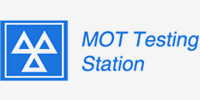With more than two thirds of cars failing their MOT test at the first attempt, there are some basic maintenance check that every driver can do?
It is all too easy to take the modern car for granted. Most of us simply unlock the door, climb in and when we turn the key or push the start button the engine fires up. Reliability is such that formerly essential supplies such as jump leads, WD40 and spare oil and screenwash have probably found their way into the garage instead of the boot, rendered obsolete.
Is our nonchalant attitude fully justified, though? Shockingly, according to the Vehicle Operator and Services Agency, 40 per cent of cars fail their MOT test at the first attempt - and for faults that can be easily checked by anyone, regardless of mechanical ability. Tyres, driver visibility and non-operational lights are the top three failure items.
To make matters worse, ignoring unusual noises and leaving out simple, but essential, checks can leave us with unwanted maintenance bills and even unsafe vehicles.
So here are our top checks to help you to safer, worry free motoring and don't forget if you are not sure how to do these checks call Bolton Tyre and Exhaust Service Centre and find out how we can help.
Oil
Checking your car's oil and fluid levels is easy; all the instructions are in your owner' manual.
When checking the engine oil level ensure that the car is parked on a level surface, preferably with the engine cold. The best time to do this is before you start up in the morning.
- Remove the dipstick and wipe with a clean cloth, note the marks for high and low level.
- Now, put the dipstick back in and remove it again, this time note the oil level, it should be close to the high mark.
- Top up if necessary.
- The oil filler cap is at the top of the engine.
- Your owner's manual will tell where to find it and what grade of oil to use.
- Add a little at a time and check the level after each top up, be careful not to overfill.
- A small funnel will help prevent spillage and don’t forget to replace the dipstick.
Coolant
Each week check the coolant level in the expansion bottle, this is usually located close to the radiator (check your owner's manual for the location).
- The expansion bottle will have a high and low mark or it may be marked hot and cold.
- The level fluctuates with engine temperature so it is best to check when cold.
- Note the level, it should be between the two marks.
- Mix coolants, if you are unsure about which type of coolant is in your car, have it flushed out and refilled with the manufacturers recommended coolant.
- Never use tap water in your cooling system.
- Some coolants are supplied in concentrate form, always mix with distilled water.
Battery
- The battery is a much-neglected part of the car's electrical system and the cause of most breakdowns.
- Keeping the electrolyte level topped up and the terminals clean will ensure long life and a reliable start. Some batteries are sealed for life and require no topping up, but the terminals should be kept free of corrosion and the battery case should be clean and dry.
- If your battery is the non-sealed type then you can check the level by removing the caps and ensuring the electrolyte covers the plates.
- Always top up with distilled water as tap water can contaminate the electrolyte and shorten the life of the battery. When disconnecting the battery to clean the terminals, always disconnect the negative terminal first and reconnect last.
- Check your owner's manual as the radio code, engine computer and transmission computer can be affected by disconnecting the battery.
- Never smoke or use a naked flame near the battery as explosive gases can collect in this area and ignite, causing serious personal injury and damage to the car's electrical components.
- Your battery contains acid, which can be harmful to the skin and the car' bodywork.
- Dilute any spills with plenty of water.
Windscreen
- Check the washer reservoir weekly and top up with clea water.
- Add a windscreen solvent to prevent road grime build- up.
- You can adjust and clean your washer jets with a small needle, but be careful not to damage the nozzles.
- Regularly clean you windscreen with a glass cleaner.
- Never use household washing-up liquid or detergents in the reservoir, as they can damage the wiper rubbers.
Lights
- Your car's lights not only show you the way, but also allow others to see you.
- You can check the front lights of your vehicle yourself, but you may need some help checking the rear lights of your vehicle.
- If your lights are not working your car is not roadworthy and you could be subject to a fine.
- Light globes can be purchased from most service stations.
- Your owner's handbook will indicate the correct type and the installation procedure.
Tyres
- The car's handling and braking performance rely heavily on tyres.
- Ideally pressures should be checked when the tyres are cold as the pressure increases with temperature.
- Incorrect pressures can cause premature tyre wear and poor handling. Purchase a good gauge, service station gauges can be erratic as they get bashed around a bit. Some service stations have automatic tyre inflators - dial in the correct pressure, which you will find in the owner's manual or on the tyre placard attached to the car's bodywork, connect the hose to the tyre valve and the rest is done automatically.
- Don't forget to replace the dust caps.
- Carry out a visual inspection of the tyres.
- Carefully check the sidewalls for cuts and damage, these can cause the tyre to blow out.
- Check the tread for uneven or excessive wear and separation. The minimum legal tread depth in Australia is 1.5mm, all tyres have tread depth indicators between the treads at regular intervals.
- Don't be caught out. Check the pressure in your spare tyre regularly and while you're doing that, make sure the jack and wheel nut spanner is in place. Uneven tyre wear may indicate a wheel alignment problem.
Need Help? Call Us Today To Book Your Vehicle Check


